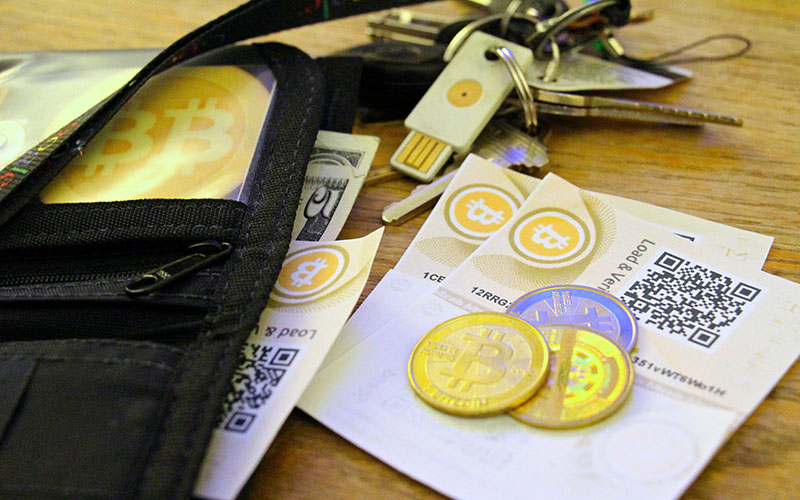By Gail MarksJarvis
Chicago Tribune
WWR Article Summary (tl;dr) According to personal finance columnist Gail MarksJarvis, a chat about bitcoin may make you think it’s time to buy; to get in as quickly as possible and enjoy a no-brainer investment. But beware. This copycat approach to investing has led to crushing losses for people tantalized by astronomical gains.
Chicago Tribune
You might be tantalized by the shocking rise in the value of bitcoin, but don’t let it sweep you off your feet.
This week bitcoin, a relatively young synthetic currency that people use to buy items over the web, made headlines after it hit an amazing peak in price of $4,726.
During this year alone, an investment in bitcoin gained 358 percent. You read that right. While the stock market is up about 10 percent for the year, which is a nice gain for stocks in just eight months, the money people have made in stocks is puny compared with what’s been made in bitcoin.
A quick 358 percent gain in anything is a rarity, and it gets people talking and longing for the bygone days when they could have made the same investment and achieved that return.
If you have a friend who ventured into bitcoin early this year, he or she is probably giddy and eager to talk about the newfound riches.
A chat about bitcoin may make you think it’s time to join your friend; to get in as quickly as possible and enjoy a no-brainer.
But beware. This copycat approach to investing has led to crushing losses for people tantalized by astronomical gains in the past.
Do you remember the housing crash of 2008, when the innocents who bought homes thinking they’d make a fortune on soaring prices ended up losing 30 percent on plunging home values?
Do you remember the technology stock bubble of early 2000?
Until the technology bubble burst, people were euphoric about the pioneers of the fledgling Internet in the 1990s, and figured the gains in technology stocks would never end.
Some beloved stocks soared 100 percent within weeks of people buying them. Then reality set in, companies went bankrupt, and technology stocks as a group lost about 70 percent of the money people had assumed was theirs for keeps.
Remember, also, the Japanese Nikkei 225 stock market. In the 1980s, Japan was the envy of the world, with an economy on fire. But hot turned into overheating, and when that happened the market that had grown investors’ money six-fold over a decade destroyed about 82 percent of it. Now, even after almost three decades, people haven’t recovered what was lost as the Nikkei plunged.
All of these bubbles and crashes have one thing in common: If you tracked them on a line graph, the sharp price gains people made day after day on the investment would form what’s called a “parabolic curve”, one of the most reliable warning signs that an investment may be overheating amid hype and euphoria.
And currently the enormous rise of bitcoin shows up as a dramatic parabolic curve, making analysts suspicious about future gains.
A parabolic curve looks like the left side of a steep mountain, shooting straight up into the air from the flat horizon. It’s powered by the belief that gains will keep on going; that there’s something special about a certain investment that will not end.
The trouble is that mountains have two sides. So the parabolic curve climbs into a mountain peak, but then there’s a tremendous plunge down the other side of the mountain. As money evaporates in the plunge people wonder why they were wounded so badly. The plunge after a parabolic curve often wipes out about two-thirds of what people had at the peak, when they thought they had a no-brainer.
buy furosemide generic buy furosemide online no prescription
Recently, Bespoke Investment Group, a research firm, warned about the potential risk in bitcoin. It ran a picture of different investments that suffered the delight and pain of parabolic curves. Bitcoin’s climb is the most dramatic of any. See www.tinyurl.com/yc93kma3.
Of course, the fact that some analysts now are watching bitcoin’s rise skeptically does not mean all is over for bitcoin.
Amid euphorias and parabolic curves, no one knows when the peak will come. Also, the awareness that astronomical gains don’t continue forever doesn’t mean that bitcoin won’t last as a digital currency and as an alternative to using dollars and other currencies to make purchases.
Bitcoin recently had a market value of $77 billion, and bitcoin has been accepted by legitimate businesses ranging from Expedia and Dish Network to Microsoft and Paypal. It’s also been used by criminals interested in hiding their transactions in so-called cryptocurrencies.
Bitcoin, one of the oldest cryptocurrencies, is popular with millennials who are comfortable with operating in the digital environment, noted John McGinnis, a Northwestern University law professor.
The digital currencies are also popular, he said, with people around the world who worry that their governments will manipulate the value of paper money. The extent of the new digital currency market can be seen here: www.coinmarketcap.com.
Regardless of the long-term interest in digital currencies, however, McGinnis does not think people should be investing in them without realizing that they could be very volatile.
___
ABOUT THE WRITER
Gail MarksJarvis is a personal finance columnist for the Chicago Tribune and author of “Saving for Retirement Without Living Like a Pauper or Winning the Lottery.”














































































































































































































































































































































































